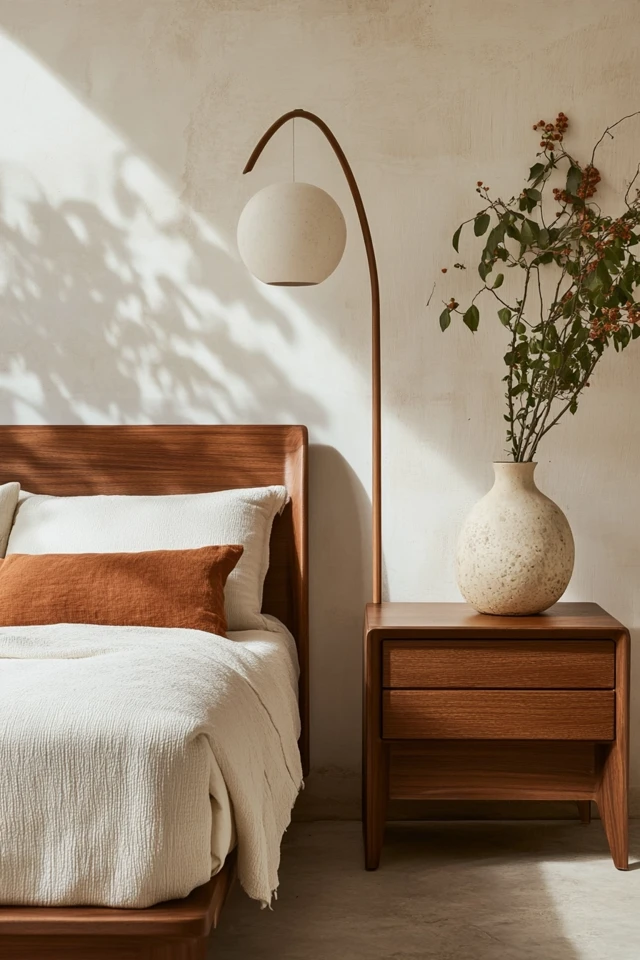Mid-century modern design has stood the test of time for one reason: it works. From its sleek furniture and sculptural lighting to warm materials and bold colors, this iconic style brings sophistication and functionality to any space. But here’s the thing—mid-century modern isn’t reserved for vintage homes or design purists. Whether you’re in a studio apartment, a suburban house, or even a farmhouse, the beauty of mid-century modern is how seamlessly it can blend into various settings.
I still remember the first time I introduced mid-century modern pieces into my eclectic, slightly chaotic home. It was a walnut credenza with those gorgeous tapered legs, and it completely transformed my living room. Suddenly, everything felt more intentional, more cohesive. Since then, I’ve learned how to adapt mid-century modern design to suit almost any space—without making it feel like a time capsule from the 1960s.
In this guide, I’ll show you how to incorporate iconic mid-century modern designs into your home, no matter your style or layout. From furniture and decor to lighting and color palettes, let’s dive into the timeless elegance of mid-century modern.
What Defines Mid-Century Modern Design?
Before we get into the specifics, it’s essential to understand the key elements of mid-century modern design:
- Clean Lines: Furniture and architecture with straight edges or gentle curves.
- Functional Aesthetic: Designs that prioritize usability without sacrificing style.
- Organic Materials: Wood, leather, stone, and metal create a natural warmth.
- Pops of Color: Neutrals paired with bold hues like mustard yellow, teal, or burnt orange.
- Connection to Nature: Large windows, indoor plants, and earthy tones bring the outdoors in.
1. Start with Iconic Furniture Pieces
Furniture is the cornerstone of mid-century modern design. Incorporating just one or two iconic pieces can transform your space.
Essential Pieces to Look For
- The Eames Lounge Chair and Ottoman: This duo screams luxury and comfort, perfect for a living room or study.
- Tulip Table: With its sleek pedestal base, it works beautifully in dining rooms or as a small breakfast nook.
- Credenzas and Sideboards: These multifunctional storage pieces are as practical as they are stylish.
- Molded Plastic Chairs: Lightweight and versatile, these are great for dining or desk chairs.
Tip for Small Spaces:
Choose furniture with slim, tapered legs to create the illusion of more space. For example, a low-profile sofa with wooden legs can make a tiny living room feel airy and open.
2. Embrace Mid-Century Color Palettes
The right colors can make or break your mid-century modern look. This style is all about balancing neutrals with bold accents.
Neutral Base
- Whites, creams, and grays provide a clean canvas.
- Warm wood tones like walnut or teak add depth.
Bold Accents
- Mustard yellow, burnt orange, olive green, and teal are classic mid-century hues.
- Use these colors sparingly through throw pillows, rugs, or wall art.
Pro Tip:
Stick to the 60-30-10 rule: 60% neutral base, 30% complementary tones, and 10% bold accents.
3. Incorporate Statement Lighting
Mid-century modern lighting is functional yet sculptural, often doubling as a piece of art.
Iconic Lighting Fixtures
- Sputnik Chandeliers: Great for dining rooms or living areas.
- Arc Floor Lamps: Perfect for reading nooks or illuminating a sofa.
- Globe Pendants: Ideal for kitchens, dining tables, or entryways.
- Cone Sconces: Add a retro vibe to bedrooms or hallways.
Tip for Layered Lighting:
Combine ambient (chandeliers or pendants), task (floor or desk lamps), and accent lighting (sconces) to create depth and flexibility in your space.
4. Use Natural Materials
One of the hallmarks of mid-century modern design is its emphasis on organic materials.
Materials to Incorporate
- Wood: Teak, walnut, and rosewood are the most common choices for furniture and decor.
- Leather: A caramel leather sofa or armchair adds warmth and timeless appeal.
- Stone: Use marble, travertine, or slate for tabletops or fireplaces.
- Metal: Brass, chrome, and matte black accents add a sleek, modern touch.
Example:
A teak dining table paired with molded plastic chairs and a brass chandelier creates the perfect mix of organic and industrial elements.
Picture Gallery
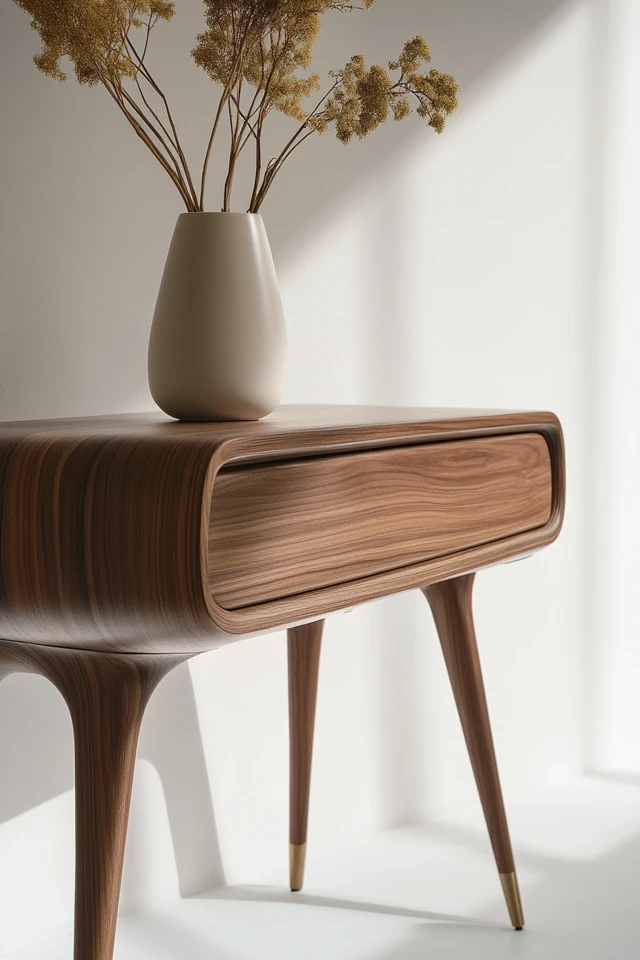
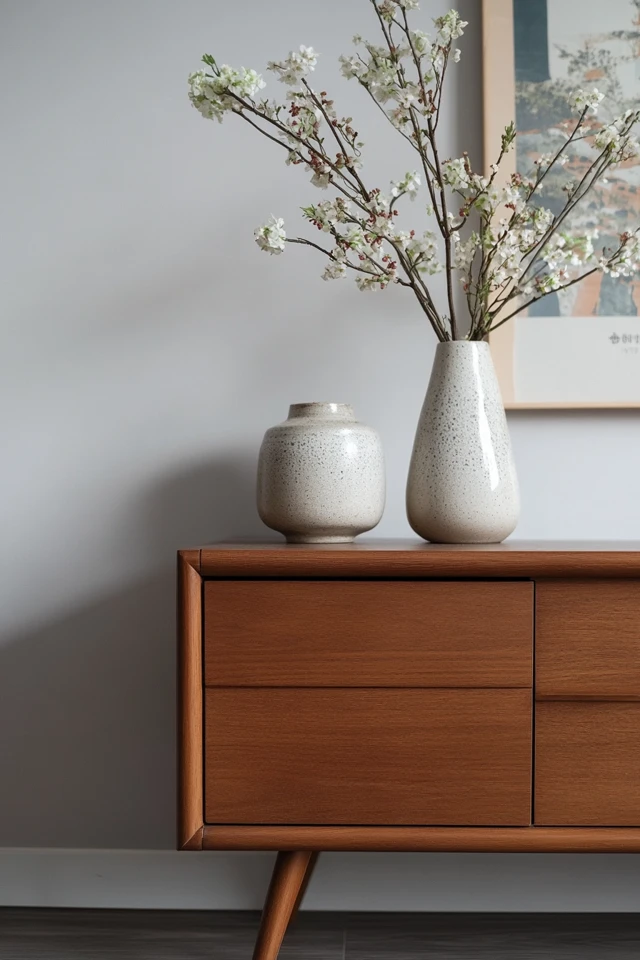
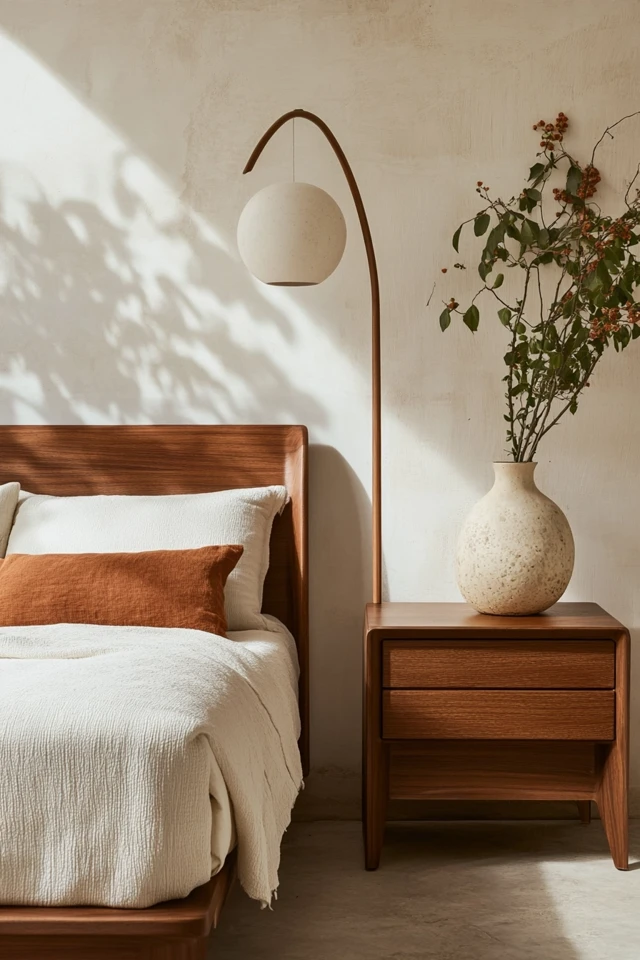
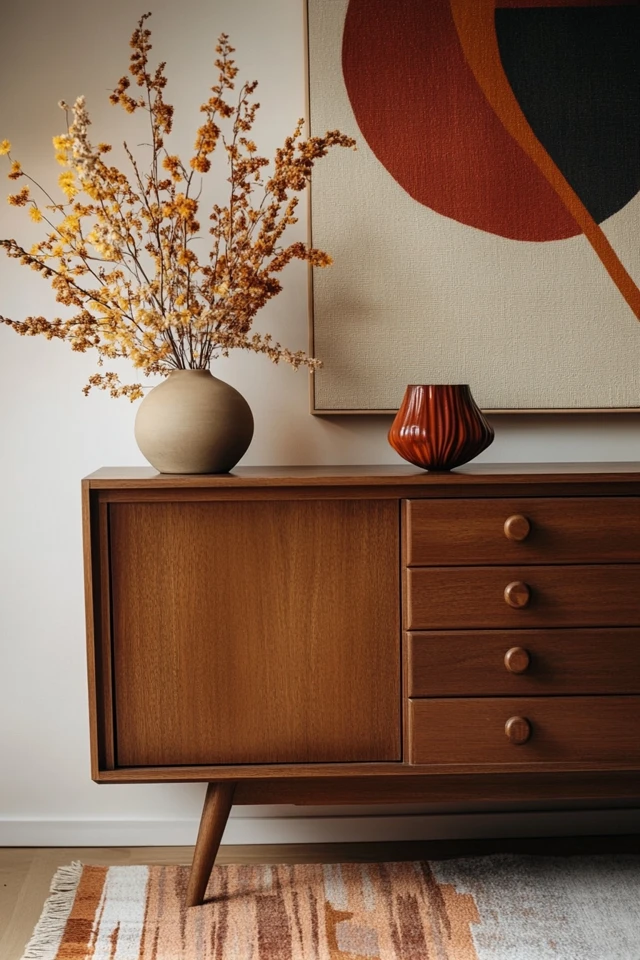
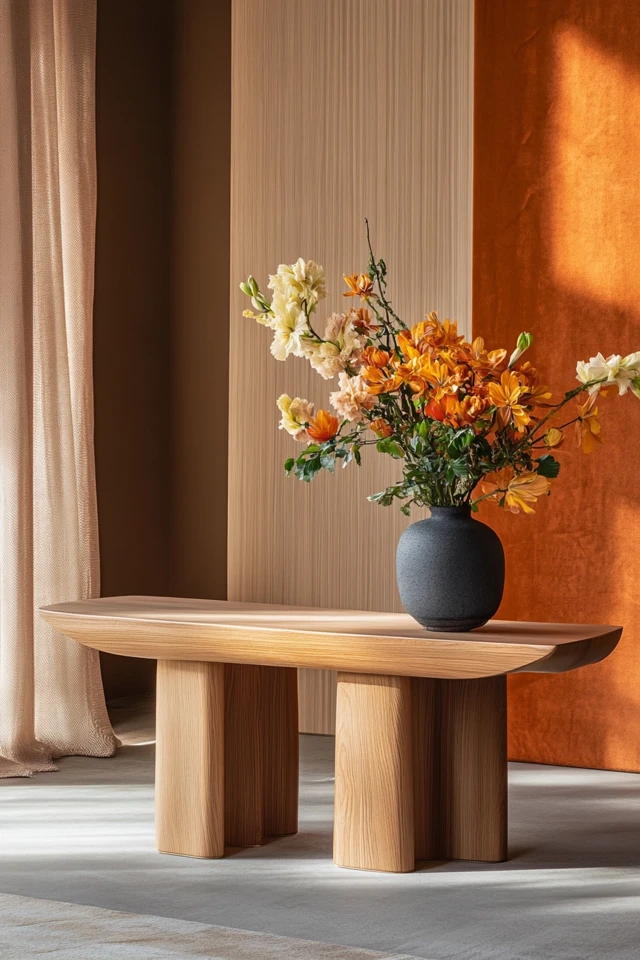
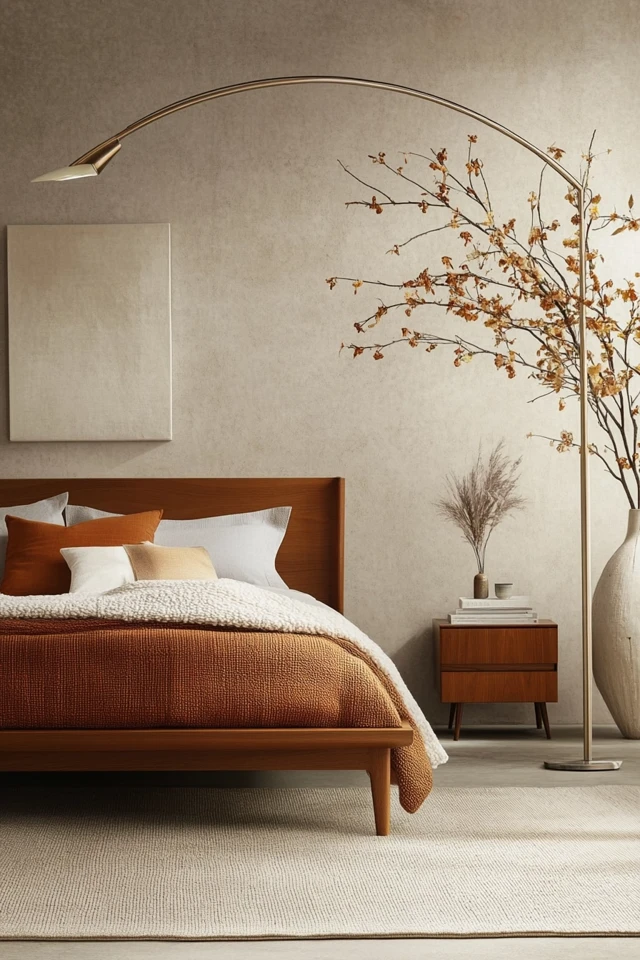
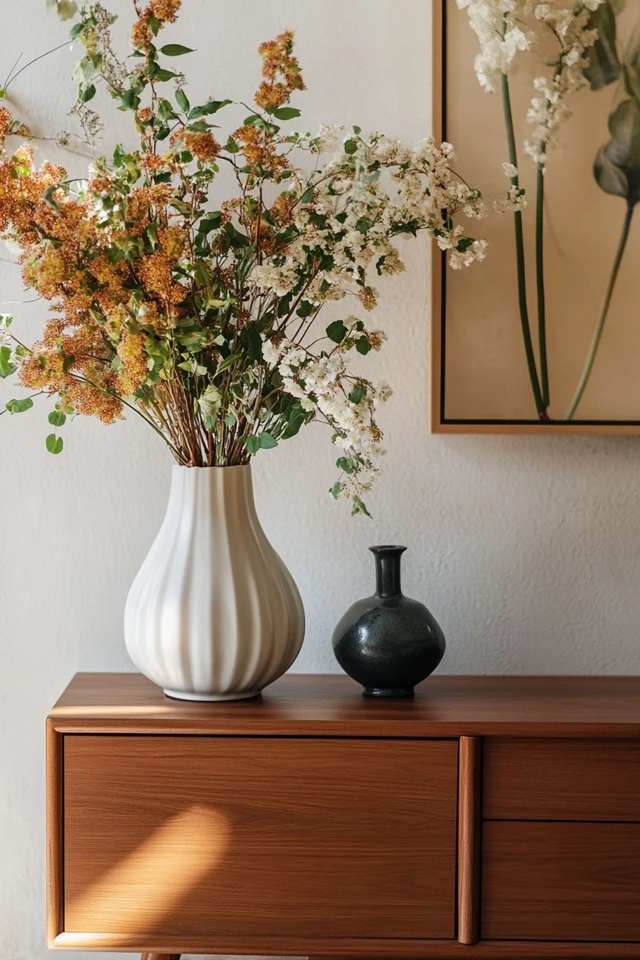
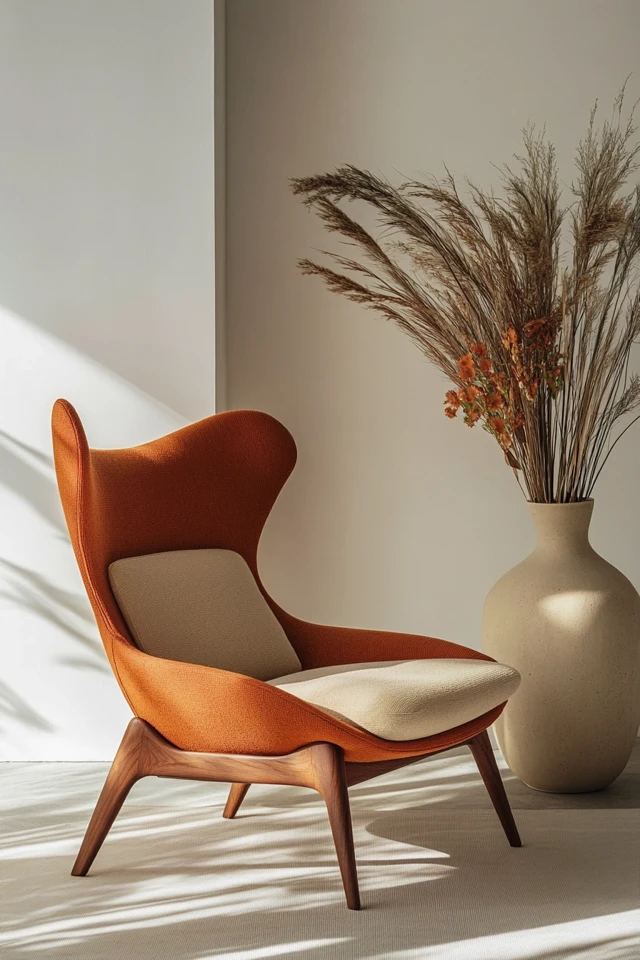


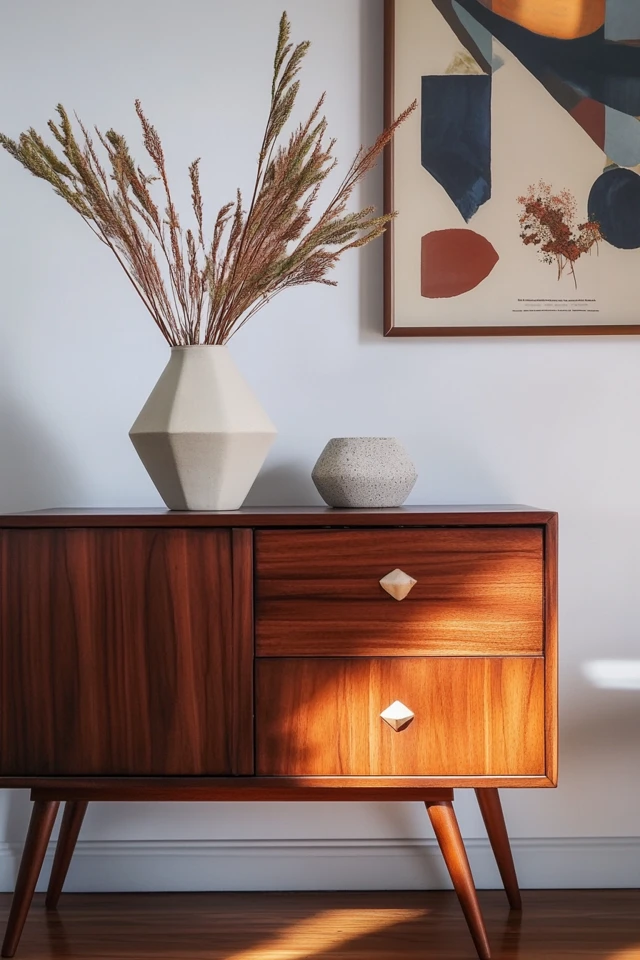

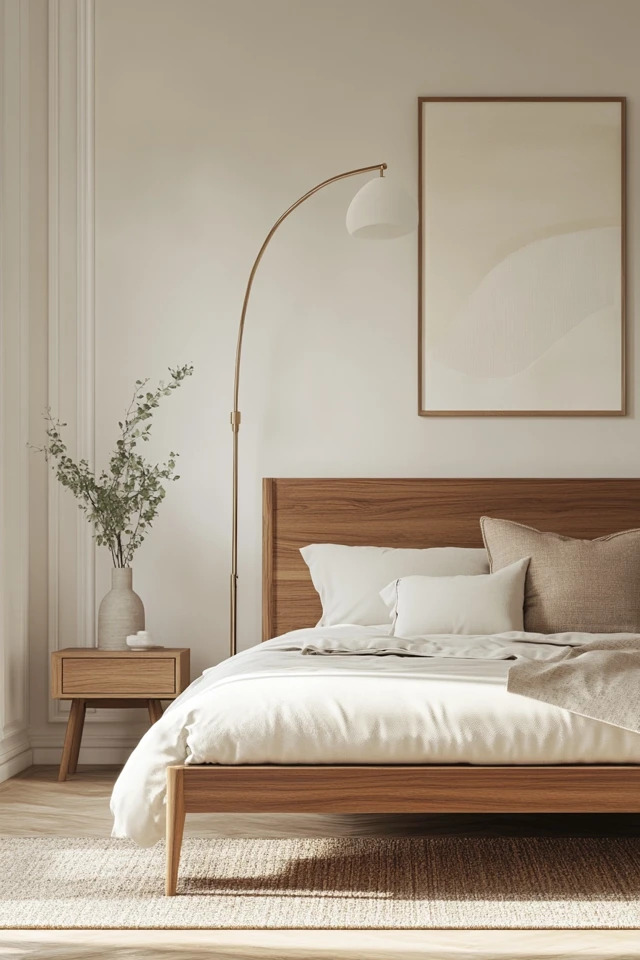
5. Add Geometric Patterns and Textures
Patterns and textures are essential for mid-century modern interiors, helping to break up clean lines and add visual interest.
Where to Use Patterns
- Rugs: Opt for geometric designs or abstract motifs in muted tones.
- Throw Pillows: Mix and match patterns like chevrons, stripes, or atomic shapes.
- Wallpaper: Consider an accent wall with a subtle geometric print.
Tip for Balance:
If your furniture and decor are heavily patterned, keep walls and larger surfaces neutral to avoid overwhelming the space.
6. Incorporate Indoor Plants
Greenery plays a significant role in mid-century modern design, connecting indoor spaces to nature.
Best Plants for Mid-Century Interiors
- Fiddle Leaf Fig: Tall and sculptural.
- Snake Plant: Low-maintenance and sleek.
- Rubber Plant: Adds lush greenery without being overpowering.
Pro Tip:
Use minimalist planters made of ceramic, wood, or metal to keep the focus on the plant.
7. Layer Mid-Century Decor
Accessories can pull your entire look together without overwhelming your space.
Mid-Century Modern Decor Ideas
- Abstract Art: Large-scale prints or vintage posters add personality to blank walls.
- Starburst Mirrors: A timeless accessory for living rooms or entryways.
- Ceramic Vases: Use muted or earthy tones for tabletop decor.
Tip:
Group accessories in odd numbers (three or five) for a balanced, natural look.
8. Adapt Mid-Century to Your Space
One of the best things about mid-century modern design is its versatility. Here’s how to adapt it to different spaces:
Living Room
- Use a low-profile sofa with a pair of accent chairs and a sleek coffee table.
- Add a geometric rug and a floor lamp for layered style.
Dining Room
- Combine a Tulip Table with upholstered dining chairs and a bold chandelier.
Bedroom
- Pair a platform bed with a teak or walnut headboard and cone-shaped bedside lamps.
Home Office
- Use a compact wooden desk with a molded plastic chair and a globe desk lamp.
9. Mix Old and New
To avoid making your space look like a mid-century time capsule, mix vintage pieces with contemporary designs.
How to Mix Styles
- Pair a vintage credenza with a modern abstract painting.
- Add a contemporary sectional sofa to a room with mid-century accent chairs.
- Use modern lighting fixtures in a space dominated by vintage furniture.
Conclusion
Incorporating iconic mid-century modern designs into your home is about balance. It’s not just about the furniture or decor, but how all the elements—materials, colors, textures, and lighting—work together to create a cohesive and timeless space.
For me, embracing mid-century modern was a journey of discovery. It taught me that good design doesn’t have to be complicated; it just has to be intentional. By mixing clean lines with organic materials, bold colors with neutral tones, and vintage finds with modern touches, you can make this iconic style work for any space.
So, whether you’re just dipping your toes into mid-century design or fully embracing the era, remember to have fun with it. Your home should reflect your personality and lifestyle, and mid-century modern is the perfect canvas for that expression. Happy decorating!
FAQ
What are the key elements of mid-century modern design?
Clean lines, functional aesthetics, organic materials like wood and leather, bold pops of color, and a connection to nature.
Can mid-century modern design work in small spaces?
Absolutely! Its low-profile furniture and clean lines are perfect for maximizing space in small rooms.
Where can I find affordable mid-century modern furniture?
Look for vintage pieces on platforms like Facebook Marketplace or estate sales. For reproductions, check out retailers like Article, West Elm, or AllModern.
How can I add mid-century style without replacing my furniture?
Start with accessories like throw pillows, rugs, lighting fixtures, or a starburst mirror. These small touches can bring a mid-century vibe to any room.
What colors work best for mid-century modern interiors?
Stick to a neutral base (white, cream, gray) and add pops of mustard yellow, teal, burnt orange, or olive green for accents.

